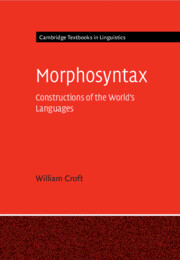Refine search
Actions for selected content:
36846 results in Cambridge Textbooks
3 - Health promotion principles and practice: Addressing complex public health issues using the Ottawa Charter
- from Part 1 - Historical and theoretical perspectives
-
-
- Book:
- Public Health
- Published online:
- 25 July 2022
- Print publication:
- 10 August 2022, pp 43-61
-
- Chapter
- Export citation
20 - The health of migrants and refugees
- from Part 4 - Public health issues and special populations
-
-
- Book:
- Public Health
- Published online:
- 25 July 2022
- Print publication:
- 10 August 2022, pp 364-381
-
- Chapter
- Export citation
9 - Individual decision-making in public health
- from Part 2 - Determinants of health
-
-
- Book:
- Public Health
- Published online:
- 25 July 2022
- Print publication:
- 10 August 2022, pp 164-181
-
- Chapter
- Export citation

Irrigation Engineering
- Principles, Processes, Procedures, Design, and Management
-
- Published online:
- 05 August 2022
- Print publication:
- 07 July 2022
-
- Textbook
- Export citation

Morphosyntax
- Constructions of the World's Languages
-
- Published online:
- 04 August 2022
- Print publication:
- 04 August 2022
-
- Textbook
- Export citation
56 - Fock Space Calculation with Field Operators
- from Part IIe - Many Particles
-
- Book:
- Quantum Mechanics
- Published online:
- 22 December 2022
- Print publication:
- 04 August 2022, pp 623-631
-
- Chapter
- Export citation
4 - Proofs
-
- Book:
- Connecting Discrete Mathematics and Computer Science
- Published online:
- 16 December 2022
- Print publication:
- 04 August 2022, pp 143-214
-
- Chapter
- Export citation
20 - Systems of Identical Particles
- from Part I - Formalism and Basic Problems
-
- Book:
- Quantum Mechanics
- Published online:
- 22 December 2022
- Print publication:
- 04 August 2022, pp 229-239
-
- Chapter
- Export citation
2 - Basic Data Types
-
- Book:
- Connecting Discrete Mathematics and Computer Science
- Published online:
- 16 December 2022
- Print publication:
- 04 August 2022, pp 5-78
-
- Chapter
- Export citation
26 - Bohr–Sommerfeld Quantization
- from Part I - Formalism and Basic Problems
-
- Book:
- Quantum Mechanics
- Published online:
- 22 December 2022
- Print publication:
- 04 August 2022, pp 290-300
-
- Chapter
- Export citation
Language Index
-
- Book:
- Morphosyntax
- Published online:
- 04 August 2022
- Print publication:
- 04 August 2022, pp 755-760
-
- Chapter
- Export citation
5 - The Structure and Origin of Modification Constructions
- from Part II - Argument Phrase Structure
-
- Book:
- Morphosyntax
- Published online:
- 04 August 2022
- Print publication:
- 04 August 2022, pp 140-168
-
- Chapter
- Export citation
24 - Motion in a Magnetic Field, Hall Effect and Landau Levels
- from Part I - Formalism and Basic Problems
-
- Book:
- Quantum Mechanics
- Published online:
- 22 December 2022
- Print publication:
- 04 August 2022, pp 272-281
-
- Chapter
- Export citation
2 - Propositional Act Constructions
- from Part I - Introduction
-
- Book:
- Morphosyntax
- Published online:
- 04 August 2022
- Print publication:
- 04 August 2022, pp 32-62
-
- Chapter
- Export citation
3 - Relativistic Classical Fields
-
- Book:
- Introduction to Quantum Field Theory
- Published online:
- 02 September 2022
- Print publication:
- 04 August 2022, pp 156-204
-
- Chapter
- Export citation
Reviews
-
- Book:
- Connecting Discrete Mathematics and Computer Science
- Published online:
- 16 December 2022
- Print publication:
- 04 August 2022, pp ii-ii
-
- Chapter
- Export citation
Preface
-
- Book:
- Introduction to Quantum Field Theory
- Published online:
- 02 September 2022
- Print publication:
- 04 August 2022, pp xv-xx
-
- Chapter
- Export citation
Part IV - Complex Sentences
-
- Book:
- Morphosyntax
- Published online:
- 04 August 2022
- Print publication:
- 04 August 2022, pp 459-615
-
- Chapter
- Export citation
39 - Application: Interaction with (Classical) Electromagnetic Field, Absorption, Photoelectric and Zeeman Effects
- from Part IIb - Approximation Methods
-
- Book:
- Quantum Mechanics
- Published online:
- 22 December 2022
- Print publication:
- 04 August 2022, pp 436-446
-
- Chapter
- Export citation
13 - Symmetries in Quantum Mechanics II: Discrete Symmetries and Internal Symmetries
- from Part I - Formalism and Basic Problems
-
- Book:
- Quantum Mechanics
- Published online:
- 22 December 2022
- Print publication:
- 04 August 2022, pp 149-158
-
- Chapter
- Export citation
